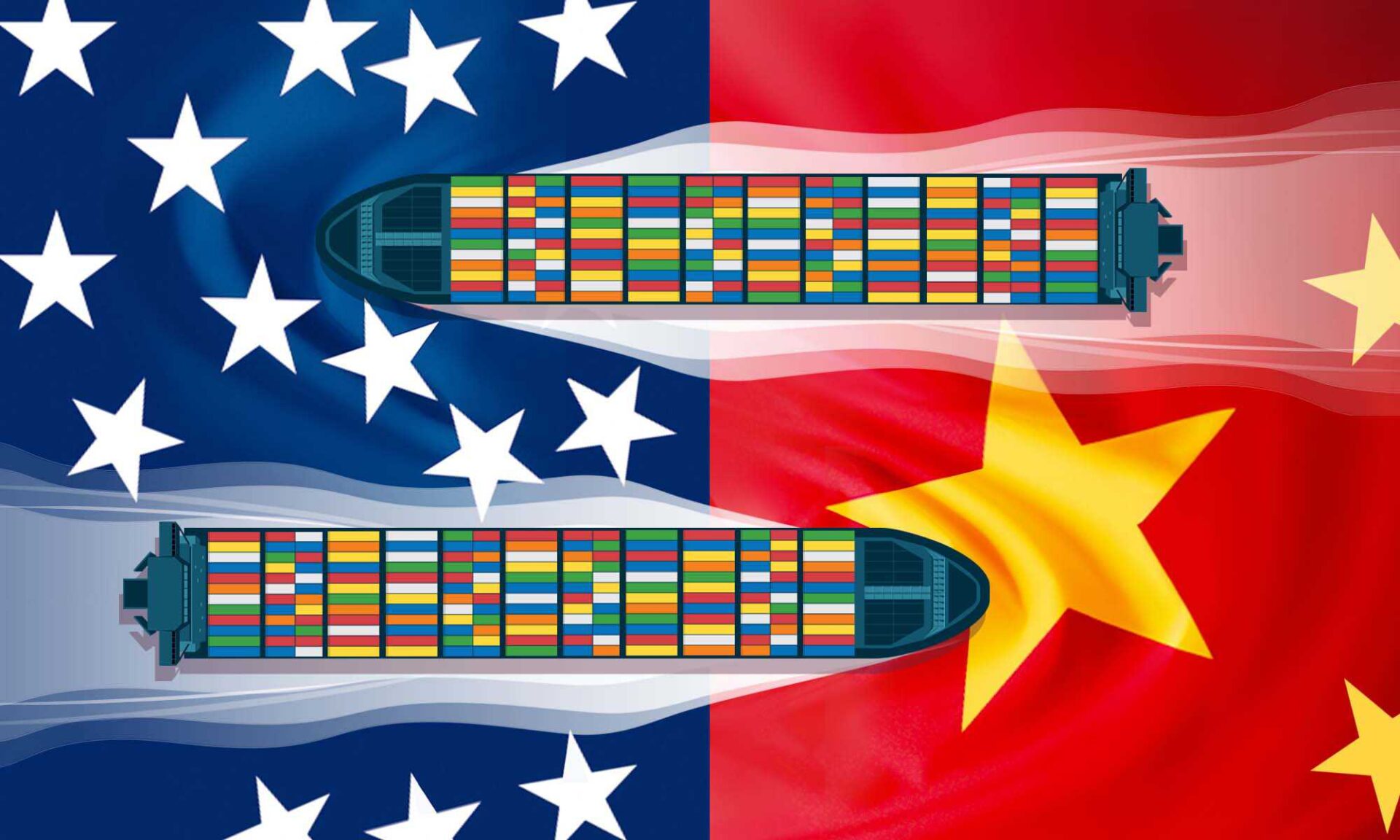HONG KONG — In a swift and calculated response to the latest trade measures imposed by the United States, China has announced a wide-ranging package of economic countermeasures aimed at the world’s largest economy. The move comes after U.S. President Donald Trump enforced a 10% tariff on Chinese imports, a decision that Beijing has strongly condemned.
China’s Ministry of Finance on Tuesday revealed the implementation of new tariffs on a variety of American goods, including a 15% duty on specific types of coal and liquefied natural gas (LNG), as well as a 10% levy on crude oil, agricultural machinery, large-displacement vehicles, and pickup trucks. These newly introduced tariffs will take effect on February 10.
Further intensifying the economic standoff, Beijing’s Ministry of Commerce and the customs administration have jointly enacted stringent export restrictions on more than two dozen metals and related technologies, effective immediately. Among the affected materials are tungsten, a crucial element widely used in industrial and defense applications, and tellurium, an essential component in the production of solar cells. The restrictions on these strategic materials are expected to have far-reaching consequences, particularly for industries in the United States that rely on Chinese exports for manufacturing and technological development.
In addition to these economic measures, China has escalated tensions by adding two prominent U.S. companies to its “unreliable entities list.” The companies targeted are Illumina, a leading biotechnology firm specializing in genetic sequencing, and PVH Group, the parent company of global fashion brands Calvin Klein and Tommy Hilfiger. According to China’s Ministry of Commerce, these companies were added to the list for alleged violations of “normal market trading principles,” though no further details were provided.
As trade hostilities deepen, China’s regulatory bodies are also taking steps beyond tariffs. The State Administration for Market Regulation announced that it has launched an antitrust investigation into Google, accusing the American tech giant of potential monopolistic practices. While Google’s search engine is not available in China and the company maintains only a minimal presence in the country, the move is largely seen as a symbolic warning to other U.S. technology firms operating in or relying on the Chinese market.
The Economic and Political Ramifications
China’s retaliatory measures come in direct response to the broad 10% tariffs imposed by the United States, which officially came into effect following an announcement from the White House over the weekend. Despite Beijing’s targeted countermeasures, analysts suggest that the overall impact on the U.S. economy may be limited.
Julian Evans-Pritchard, head of China Economics at Capital Economics, noted in a research report that China’s response appears to be carefully calibrated to deliver a strong political message without inflicting severe economic harm. While the targeted goods represent a substantial portion of certain industries, they account for only a fraction of the total trade volume between the two nations. The newly imposed Chinese tariffs are expected to impact approximately $20 billion worth of annual imports from the United States, which constitutes roughly 12% of the total trade between the two nations. By contrast, the United States is imposing tariffs on over $450 billion worth of Chinese goods, a significantly larger portion of their trade relationship.
However, the long-term implications of these actions remain uncertain. Beijing has signaled its willingness to challenge the tariffs through legal avenues. The Ministry of Commerce confirmed on Tuesday that China has officially filed a complaint with the World Trade Organization (WTO) against the Trump administration’s tariff measures.
“The U.S. actions severely undermine the rules-based multilateral trading system, disrupt the foundation of economic and trade cooperation between China and the United States, and threaten the stability of global industrial and supply chains,” the ministry said in a strongly worded statement.
A Renewed Trade War?
The latest escalation raises concerns that the world’s two largest economies may be heading toward another full-scale trade war, reminiscent of the economic confrontation that defined Trump’s first term in office. The timing of China’s response—coinciding with the final day of the country’s week-long Lunar New Year holiday—suggests a deliberate attempt to project strength both domestically and internationally.
The broader context of Trump’s tariffs also indicates that Washington’s strategy extends beyond trade concerns. The White House announced the tariffs as part of a broader economic package targeting not just China, but also Mexico and Canada. Trump cited illegal immigration and the flow of fentanyl and other drugs into the U.S. as justification for the measures.
Interestingly, Trump agreed to temporarily suspend tariffs on Mexico and Canada following discussions with their respective leaders on Monday—just one day before the new duties were set to take effect. However, there has been no such agreement with China, and Beijing has yet to confirm whether any diplomatic negotiations are taking place. Trump stated that he expected to speak with Chinese President Xi Jinping within the next 24 hours, though no official response has been issued by Beijing.
The Underlying Issues: Trade, Technology, and Fentanyl
The economic conflict between the U.S. and China is not solely about tariffs. The two nations remain at odds over a range of critical issues, including a massive trade deficit, competition in emerging technologies, and national security concerns.
One of the key factors fueling tensions is the fentanyl crisis in the United States. U.S. law enforcement agencies have long accused certain Chinese companies of supplying precursor chemicals used in the production of fentanyl, a synthetic opioid that has contributed to an alarming number of overdose deaths in North America. According to official estimates, a significant portion of fentanyl found in the U.S. is manufactured using chemicals sourced from China, before being processed in Mexico and smuggled into the U.S.
Beijing has repeatedly denied allegations of state involvement in the fentanyl trade and has insisted that it is actively working to curb illegal exports of precursor chemicals. In its latest statement, China warned that Trump’s new tariffs could “erode the foundation of trust and cooperation in the field of drug control” between the two countries.
Room for a Deal?
Despite the growing hostilities, there are still signs that both nations may be willing to return to the negotiating table. The 10% tariffs imposed by Trump—while significant—are far lower than the 60% tariffs he had threatened during his campaign, suggesting that Washington is leaving room for potential compromise.
Trump has made it clear that he views the economic battle with China as central to his presidency. He has repeatedly stated that he intends to win an economic competition against China and has ordered a comprehensive review of the U.S.-China trade relationship, which is set to be completed by April 1. This review could form the basis for additional duties on Chinese goods in the future, should negotiations fail to yield a resolution.
Additionally, Trump has hinted that a broader trade deal could be within reach if China is willing to make concessions. He has also linked trade negotiations to other geopolitical issues, including the war in Ukraine and the potential ban of social media giant TikTok, which is owned by Chinese company ByteDance.
The Road Ahead
The coming weeks and months will be critical in determining whether the U.S. and China can resolve their trade disputes or whether the situation will deteriorate into a prolonged economic standoff. While Beijing has expressed its desire to avoid a repeat of the trade war that unfolded during Trump’s first term, it remains to be seen whether both sides can find common ground.
China has taken steps to diversify its trade partnerships in recent years, reducing its reliance on the U.S. market. However, the country’s export-driven economy is currently facing slowing growth and other domestic challenges, adding another layer of complexity to the negotiations.
For now, businesses and investors around the world are closely watching the developments, as the fate of the global economy hangs in the balance.







